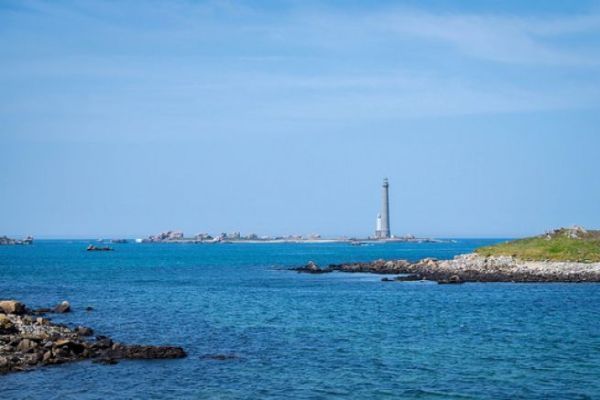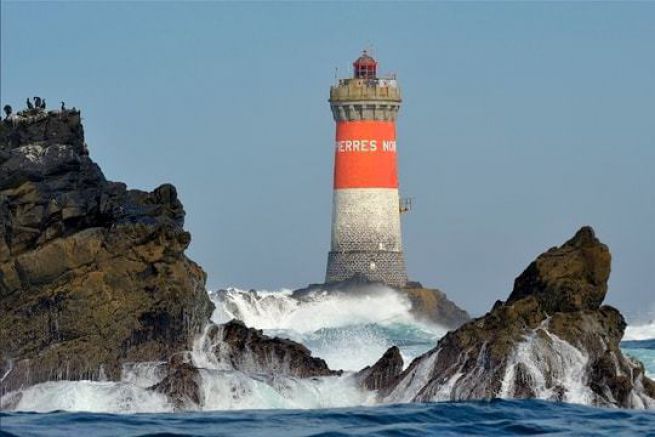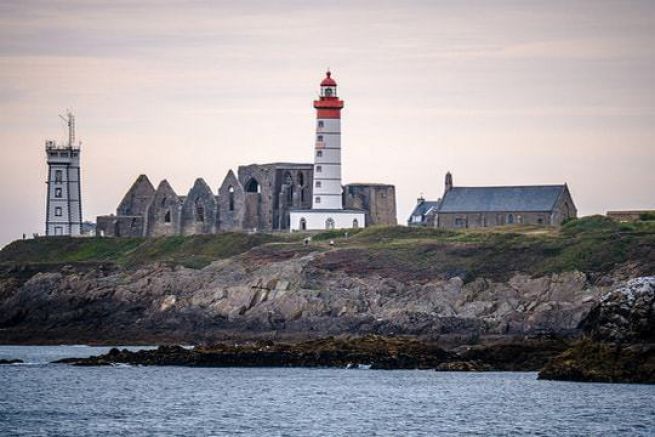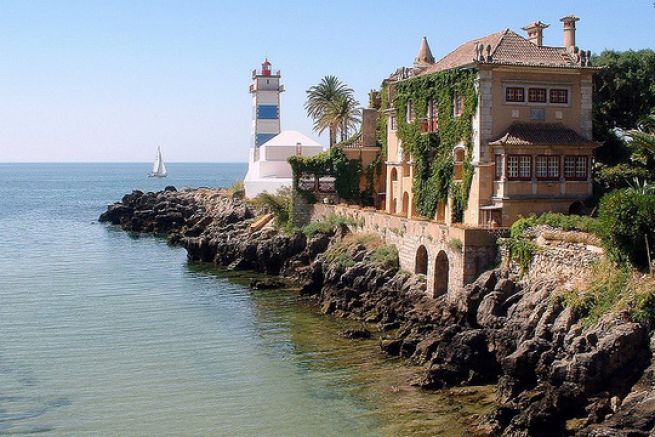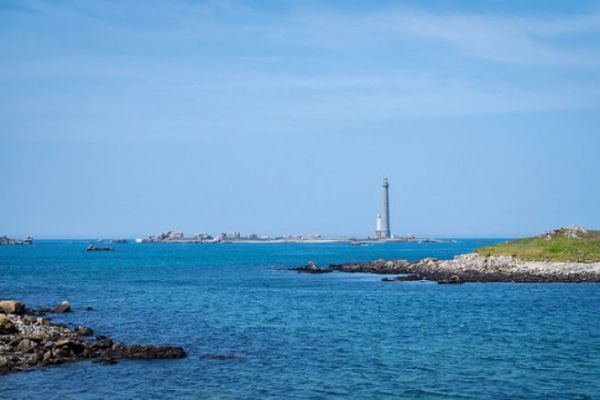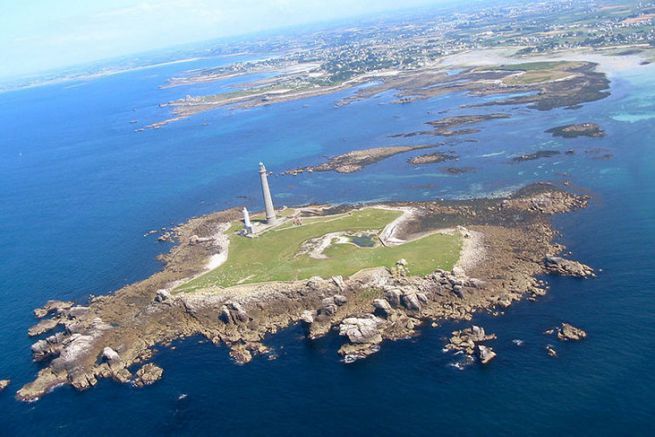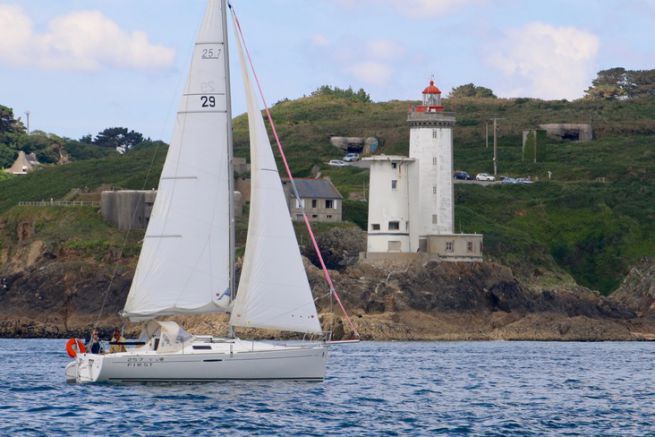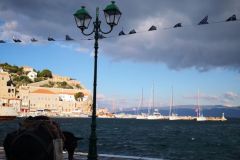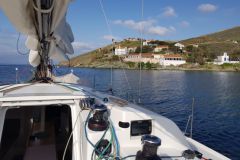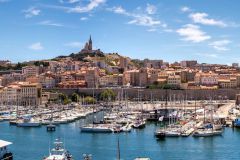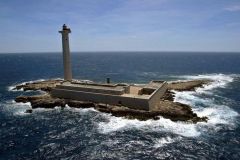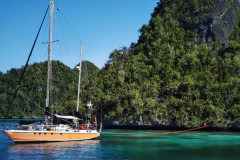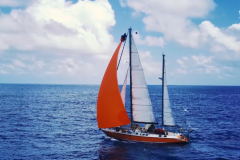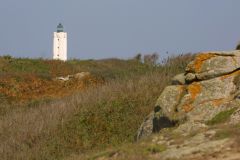1. Rubjerg Knude Lighthouse in Denmark
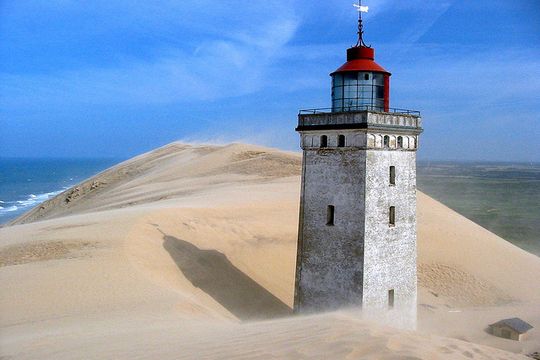
Rubjerg Knude Lighthouse is located on the North Sea coast in Rubjerg, in the municipality of Jutland in Hjørring, northern Denmark. Construction began in 1899 and it was first lit on December 27, 1900.
It is situated 60 m above sea level on the top of the Lønstrup Klint. Quicksand and coastal erosion are a serious problem in the region. The coast is eroded on average 1.5 metres each year, as seen with the nearby Mårup Church. Built in 1250, it was located 1 km from the coast, but was dismantled in 2008 to prevent it from falling into the sea.
The lighthouse ceased operation on 1 August 1968. For a number of years, the building was used as a museum and café, but quicksand caused it to be abandoned in 2002. In 2009, the small buildings were severely damaged by sand pressure and disappeared. The lighthouse is expected to fall into the sea by 2023.
2. Fastnet Lighthouse in Ireland
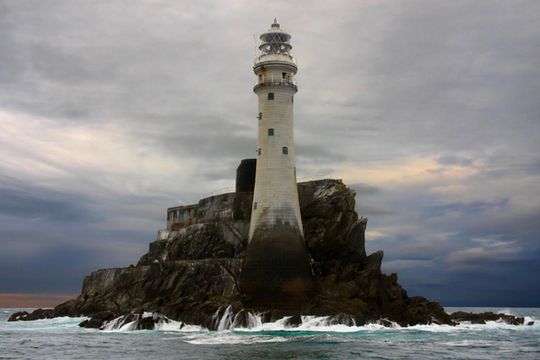
The Fastnet Lighthouse is located in Ireland on Fasnet Rock. Located 6.5 km southwest of Clear Iceland in County Cork, it is Ireland's highest lighthouse. Its construction began in 1853 and it was lit for the first time on the 1 er january 1854, to replace the old lighthouse on Clear Island.
It was built following the sinking of an American ship which sank in a night of fog in 1847 and caused the death of 92 people (out of 110 passengers and crew members).
The lighthouse and islet are now famous as a crossing point for the Fastnet Race and Mini-Fastnet, well-known ocean races. It also serves as a beacon during many other races, such as the Solitaire du Figaro.
3. The Saint-Mathieu Lighthouse in France
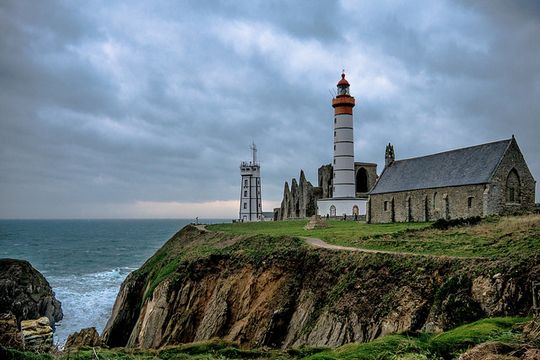
The Saint-Mathieu lighthouse is located on Saint-Mathieu Point, in Plougonvelin, near Brest, Finistère. The lighthouse was built in 1835 in the ruins of an old abbey.
The current lighthouse has been on since 1835. 37 m high, its white light illuminates the ocean every 15 seconds. With a range of 29 miles, it signals the route to follow to enter the Brest Narrows. Electrified in 1937, it was automated in 1996. Its last guard left the premises in 2006. The Saint-Mathieu lighthouse has been classified as a historic monument since November 2010.
4. Burnham-on-Sea Low lighthouse in England

The Low Lighthouse is one of three lighthouses in Burnham-on-Sea, Somerset, England, and the only one that is still active. It is a Grade II building. It stands on nine wooden pillars, some reinforced with metal plates. The structure is whitewashed with lime with a vertical red stripe on the sea side.
This wooden lighthouse measures 36 m high, the light being located at a height of 23 m. It was built by Joseph Nelson in 1832, to work with the High Lighthouse, and replace the original Round Tower Lighthouse, which itself had been built to replace the light in the St Andrew's Church Tower, which guided fishing boats into the harbour.
5. The Virgin Island Lighthouse in France
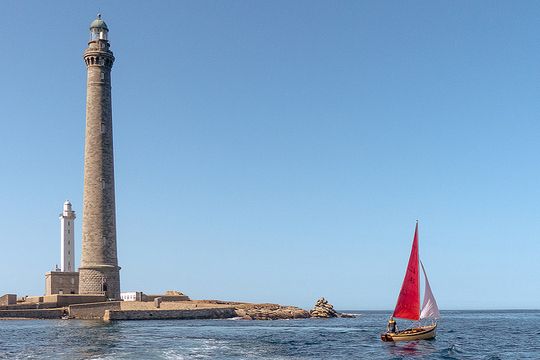
The Virgin Island lighthouse, one of the highest in the world, is a maritime lighthouse built on an islet called"Virgin Island" 1.5 km from the coast. It is located in Finistère-Nord in the Lilia archipelago (commune of Plouguerneau). This lighthouse has been classified as a historic monument since 23 May 2011.
The first lighthouse on Île Vierge was built between 1842 and 1845. It was lit for the first time on August 15, 1845, the same year as that of Wrac'h Island and the Plouguerneau bell tower light to mark the entrance to the Aber Wrac'h. This lighthouse was very quickly deemed obsolete because of its insufficient range (18 miles) in relation to the volume of maritime traffic at the entrance to the English Channel.
A second lighthouse was built between 1897 and 1902 on the island, with a range of 27 miles (52 km); it was first lit on March 1, 1902. The 82.50m high lighthouse is the highest in Europe and one of the most remarkable in France.
The last shift of guards took place on Friday 29 October 2010, after which the lighthouse became fully automated. It is remotely operated from the Créac'h lighthouse on the island of Ouessant.

 /
/ 